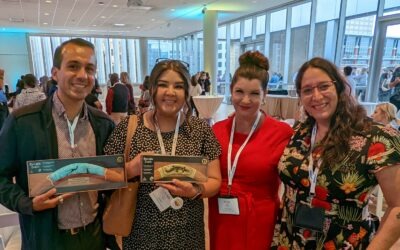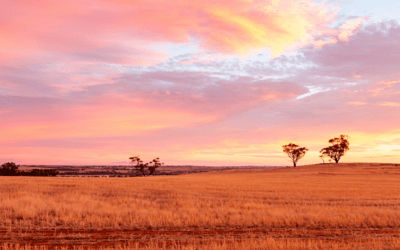Sebastian Geers
Manager, Welcoming Cities
Bel Schenk
Coordinatior (Victoria), Welcoming Cities
Q: How do you encourage local governments to work with you?
A: In Australia we see ourselves as a settler nation. Around 25% of people were born overseas, and a further 25% of people have a parent born overseas, so there is an affinity with migration that is supposedly different to many other countries. There is a long tradition of settlement services run by local governments, and a lot of councils already have someone employed in a welcoming role— but that person doesn’t necessarily have a huge budget, or power.
We shift the dial on what councils see themselves responsible for, showcasing that support for those who help new migrants is actually a very important service that a council can, and should, provide. We also show that it doesn’t have to be extra work, unless they want to go through benchmarking and accreditation. We demonstrate that a lot of work is already being done in some way, and encourage people to join in to share their knowledge and ideas as part of the national network.
Sometimes someone will come to us and say “look, we are building a sports facility and we want to make sure that it’s used for more than just the predominant Australian sports—cricket and football. How are other people doing that?” and we put them in touch with someone who can support them.
In particular, rural regions are doing a lot of work within the Welcoming network, because it’s in their best interest to have welcoming communities and attract bigger populations. This is going to help in the future; not just the local council but Australia as a whole.
Q: What sort of change are you seeking as Welcoming Australia?
A: Welcoming Australia’s idea has always been to change the conversation, and to support the receiving community to be much more welcoming; to take ownership of that. Welcoming Australia started with the event called Walk Together where people that lived here for a very long time met and walked alongside people that have just arrived. It was about us being stronger together, and not one against the other.
We all work together as a large community, so Welcoming Cities works with local governments to change policy and practice. We know that councils are much easier to influence than a state or federal government. Our hope is that mayors and councils can be much better at messaging and delivering better services to newcomers. We want to shift things at an organizational level: it might be different for a rural local government, and it might be different for a metropolitan one, but we work with them to benchmark policies, and work out where the gaps are, so they can improve their programs and policies over time.
Q: How do you support the councils?
A: We share case studies, policies, and practice with our partners; both in person at state Gatherings and Symposia, and online via webinars. We present academic research, but we try to simplify it, so it’s accessible to a wider public. These are also occasions for the councils to share their presentations on good practice. We’ve produced a few different booklets and resources such as Stories of Welcome, Steps to Settlement Success and Guidelines for Regional Settlement.
We support Councils to benchmark and become accredited against the Welcoming Cities Standard. We also create spaces for them to network and share ideas with other councils across Australia, particularly about and their practices relating to multiculturalism.
Q: What impact do your local members have on their communities?
A: We always say that the responsibility for social cohesion doesn’t just sit with one person, but that from the whole of the council it sort of trickles down into the community. That’s why it would be so important to have Diversity Champions (See Stories of Welcome Case study booklet) in every department in the council.
That initiative really wouldn’t have cost a lot of money, if really anything. It comes from a place of wanting the council to receive new migrants positively, and into a multicultural society. We want to make sure that when people come into customer service they have someone who speaks their language, someone that is trained in how to treat newcomers, or someone who works in planning who can design buildings with different cultures in mind.
These are very simple projects that can have a huge ripple effect in the community. The Kaleidoscope project, featured in Stories of Welcome, is about pairing people who’ve been in an industry for a long time with newcomers who’re struggling to get a job. 70 % of people at the end of that programme have found work in their field. I’m sure it is very easy to see the impact of this within the community.
Q: Can you recall any local successes that deserve a spotlight?
A: About two years ago in Melbourne there were a lot of media reports focusing on the South Sudanese community, and with particular reference to the South Sudanese men who were in gangs. Our response in Welcoming Cities was to get all the mayors who were representatives of metro councils in Victoria to come together and say that the negative media coverage didn’t reflect their communities. We also had a representative from the South Sudanese community speak at that press conference to change people’s ideas about his community.
Working together with the mayors in this way transformed the narrative. It also gave them a chance to demonstrate real leadership. It was a very powerful experience, and it did play a role in galvanizing different groups to speak up more loudly, and encouraging more people to join in the conversation.
There were significant mosque protests in Bendigo five years ago, organised by the far-right. We worked with those involved, as did other groups, to support them to refocus their effort on the center of the debate, away from the polarized ends of the extreme. That had a really significant effect in that community, which was essentially broken and now it is one of our poster communities doing some of the best work.
Q: How do you see your partnership with Welcoming International as part of this process?
A: Australia was the first country to formally enter into the relationship with Welcoming America, and contribute to the formation of what later became Welcoming International. Our Welcoming Cities Standard drew heavily from the Welcoming America standard, among others. The relationship for us is about support and a community of practice that we can share with, seek solutions to our challenges, and hopefully support the challenges of others too.
It’s nice to know that other people are doing similar work to us, and sometimes you get a heartening moment when someone else says ‘I’m also struggling with that’ or thinking about the same problem. It’s very beneficial to learn what’s going on in other countries, and to spread these stories. That’s why the case studies booklet has come about, to make sure people in the community, not just members of the Welcoming Cities Network, can read about what’s going on.
Q: How has developing a standard for Welcoming, and an accreditation process, helped advance the work in Australia?
A: The standard provides something really clear to point to. One of the most powerful things that councils can do in our network is to benchmark their current practice against the standard. That allows them to identify gaps and shortcomings, but also celebrate the successes of what they’re doing really well. It also allows us to say ‘look, if you’re doing all of these things, you’re doing a good job and your migrant communities are well supported and will feel welcomed.’
The perspective of actually developing it was really beneficial for an organization like ours: to go around and work out what are some other criteria and indicators that need to be in a standard, and to get a real cross-section of responses from all the different municipalities in Australia, and work out the important wants to pick out and actually use in a benchmarking document and group.
Q: And how does it make you feel to see the welcoming movement growing so rapidly?
A: The number of councils onboard doubled in the last year, and they are all going well! We will hopefully get somewhere near double again this year. It’s exciting because the larger our network is, the stronger it is, and the stronger we are as an organization.
There are parallels between the international movement and the Australian movement in the sense that the larger it is, the more people are trying things and the better we can become at innovating. If we can see that Brazil is doing something really interesting, then we can try to implement something like that in Australia. There is excitement about the opportunity that partnership might present in the future. Just having contacts in different projects so you can call them and say, “hey, can you share your research with us?”



